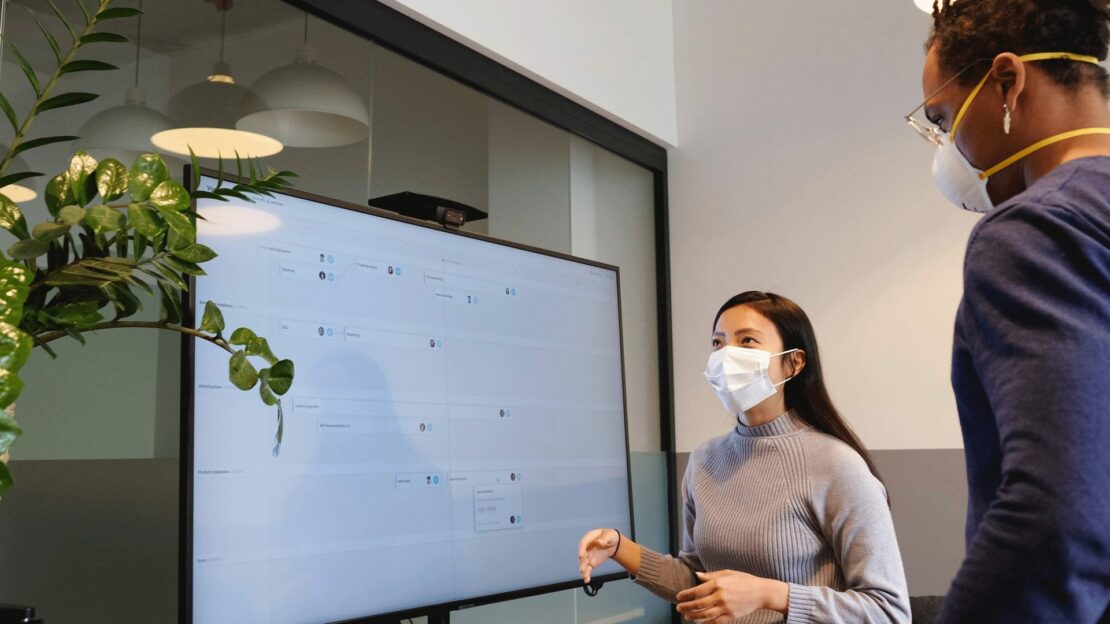Virtual Media: 5 tips for organising an online press conference
octubre 6th, 2023
In many countries, press conferences remain a very effective tool for sharing particularly important company news with media and the public. But during a global pandemic, when physical meet-ups are not possible, how can we best deliver a virtual press conference?
Grayling in Slovakia recently organised a virtual press conference for a client within the financial sector, to announce the launch of a new cashless payment programme for the self-employed and SMBs (small and mid-sized businesses). The press conference was a great success. Besides local client representatives and programme partners, it was also attended by representatives from the government and from across the banking sector. It was also very well received by the invited journalists.
How did we do it? Here are our 5 tips for organising a virtual press conference:
1. Are you ready?
Detailed planning is, of course, extremely important when organising any event, especially when the format is new. Not only is it essential to have a clear idea of the goals of the press conference, you will also need a detailed timetable for preparations, a clear division of responsibilities, a detailed scenario for the press conference and to understand all of the procedures before and after the event.
To get started, it is helpful to answer a few questions that apply to any press conference:
Which media do you want to invite to the press conference; when do you need to send out the invitations; who will be sending them and what format will you use?
- When will the press conference take place?
- How many speakers will attend the press conference?
- What will be the flow of the press conference?
- What is your back-up plan in case of technical difficulties?
2. Online platform
When deciding to organise a virtual press conference, you need to choose a suitable online platform. Zoom, Microsoft Teams and Skype are just some of the many options available. The most suitable platform for you can be selected based on several criteria:
Which platform is most in line with the company’s image and which best suits the type of press conference you are organising? And does the platform run seamlessly on every common operating system?
- How many participants do you expect at the press conference?
- Will the speaker(s) need to share a (PowerPoint) presentation or video?
- Will participants be able to actively engage and ask questions during the event?
- Will there be any international participants?
Prior to attending a virtual event, the participants need to receive a link and instructions on how to connect to the press conference. You can either send it together with the invitation or after they confirm their attendance. You should provide participants with several connection options, which usually include a direct link via the streaming portal or over the phone. It is also a good idea to provide details for a contact person who the participants can contact in case of technical problems or further questions.
3. Fail to prepare; prepare to fail
A day or two prior to the press conference, test the connection to the event, the channels of admission for participants, audio and video quality and the technical capabilities of the given streaming platform. Making time to run a rehearsal with the organisers and speakers is strongly recommended. It can help you spot any errors which you can solve prior to the live event itself.
4. Organisers in the shadows
Just because a press conference takes place online doesn’t mean that you need less manpower to ensure a successful event. Although the size of the organising team will depend to some extent on the number of participants, you are likely to need someone to be responsible for technical support, you might need a presenter, you will need a person managing the virtual room in which the conference takes place, etc.
5. «Could you repeat that, please?» The press materials you provide after the conference matter
During the conference, the Internet connection may be weak, can be interrupted for some participants, or they may be distracted by a ringing telephone, pet or child. Afterwards, you should therefore send a press release to the participants in the usual way. If possible, you should consider providing participants with a video or audio recording of the press conference as well. Journalists or other participants really appreciate that.
Also, as always, you need to make clear after a virtual press event who the journalists can contact in case of further questions or if they want to stay in touch with any of the participants. This is an important factor which influences the quality of media outputs after the press conference. Remember to allocate time for this as well.
“Preparing a virtual press conference was a great experience and we gained yet another skill in our team,” says Martina Kolláriková, Senior PR Consultant at Grayling Slovakia. “When organising such an event, you have to think about several things at once and, at the same time, you have to think very differently compared to the traditional form. No matter how great your client is and how strong your relationship is with them, the human factor will always cause delays and unexpected twists. Keep that in mind.”
What is easier in the virtual format?
- You do not have to think about securing a venue in advance which has to fulfil specific parameters and you don’t need to worry about drinks and snacks. There is no need to start planning the press conference as far in advance and you can be more flexible when setting the date for the event.
- Venue costs do not consume your budget.
- You save your time, as well as the time of speakers and journalists, because they do not need to travel anywhere. If they want to, they can attend the conference from their own bed.
- And of course, you do not need to worry about COVID-19 safety restrictions.
What are the challenges?
- You are constantly worrying whether everything will work – will the Internet connection crash at the most inconvenient time? Hopefully the press conference won’t be full of phrases like “Hello!”, “Can you hear me?”, “Are you there?”, “I can’t hear you!” etc.
- You worry that journalists will quietly leave in the middle of the press conference.
- Rehearsal is absolutely essential. For technical reasons, for organisational reasons and due to the absence of body language. So rehearse, rehearse, rehearse!
- After the formal presentation, there are no informal discussions in smaller groups or 1-on-1 meetings. The lack of this is palpable.
- The small details really matter. It is necessary to ensure that all speakers are connected at least 15 minutes prior to the start of the event. Journalists will join gradually, and in order for them not to “enter” any sooner than planned, you need to have their admission to the virtual press conference under control. When they are admitted, you should at least confirm that they are in the right place, so they are not “sitting” there in silence. These little things are even more important for virtual press events than the traditional format.
If you would like to know more about hosting a virtual press conference or are interested in what our Bratislava office can offer in terms of communications support, please contact Martina Kollarikova at martina.kollarikova@grayling.com.


